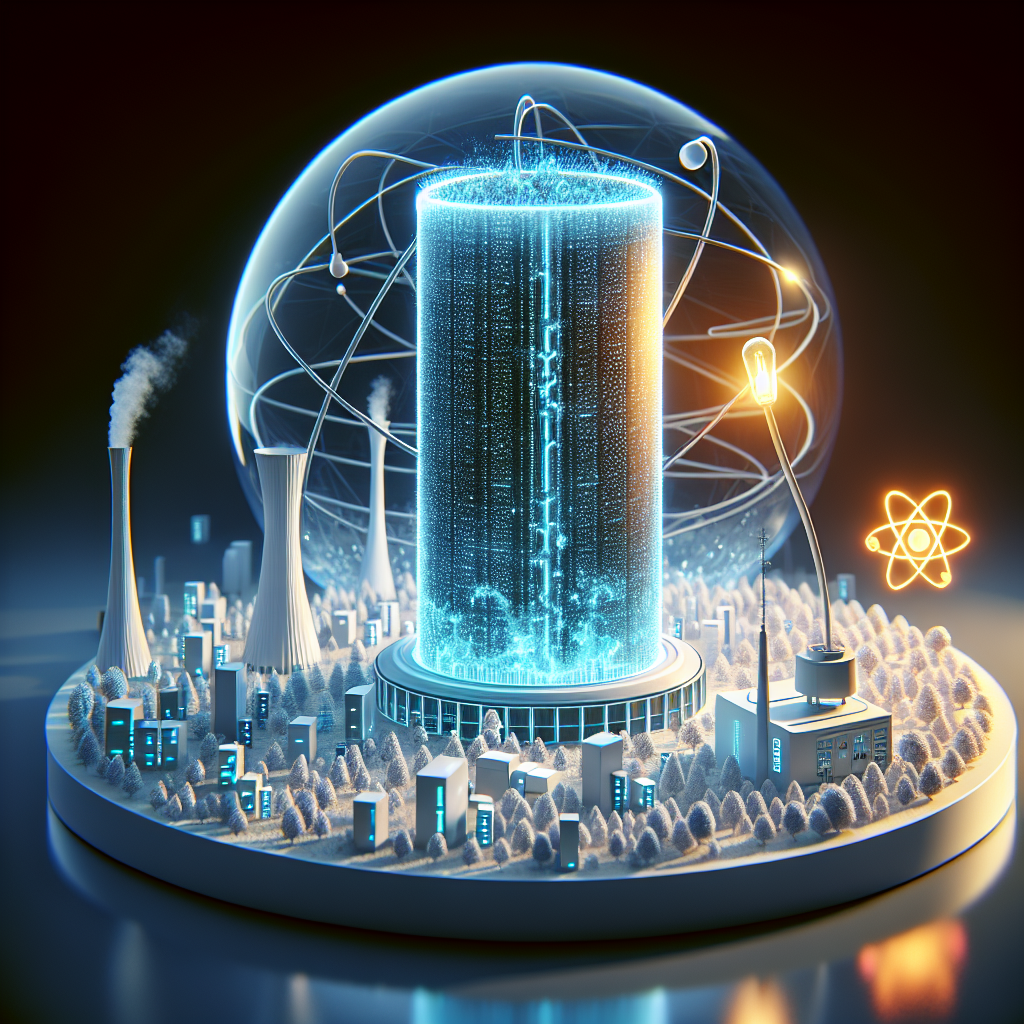Goldman Sachs Highlights Emerging Nuclear Renaissance: A Focus on Energy Demand from Data Centers
In a notable shift from its historically sidelined status, nuclear energy is being resurrected in the U.S., according to recent analysis by Goldman Sachs. The firm suggests that the country stands on the cusp of a nuclear renaissance, propelled largely by the increasing energy needs of data centers. With significant backing from major tech companies like Microsoft Corp., Amazon Inc., and Alphabet Inc., this momentum marks a pivotal change in how energy demands are being met.
Nuclear Power’s Growing Role in Data Center Energy Demand
Goldman Sachs analysts, led by esteemed analyst Brian Singer, predict a staggering 165% increase in data center power needs by 2030 compared to 2023 levels. This dramatic surge compels technological giants to diversify their energy sources, particularly turning their attention toward nuclear energy. “We continue to see Big Tech taking an all-in approach to sourcing power and pursuing low-carbon solutions,” Singer elaborated, suggesting that nuclear power stands to capture an increasing share of the energy market as we move into the 2030s.
While the analysts forecast that renewables will meet only about 40% of the growing power demand within data centers, the limitations of sources like solar and wind have opened the door for nuclear energy. The footprint required for nuclear operations—both natural gas and nuclear—pales in comparison to that of utility-scale solar and wind farms, making them appealing alternatives for powering expansive data centers.
Small Modular Reactors (SMRs) On The Rise
At the forefront of this nuclear renaissance is the advancement of Small Modular Reactors (SMRs). These compact and versatile reactors are increasingly being adopted by hyperscale cloud providers—including Google, Amazon, and Microsoft—that have already entered into multiple contracts to harness SMR technology. Their aim: to supply low-carbon, reliable energy to their growing data center operations.
The rising popularity of SMRs is a response to a pressing need for localized, sustainable power solutions. Goldman Sachs notes, “The prospects of more localized, onsite low-carbon reliable power have led to a surge in contracting by hyperscalers to support the development of small modular nuclear reactors.” Beyond these smaller applications, larger nuclear projects are also beginning to gain traction, as evidenced by Constellation Energy Corp. and its plans to reactivate a dormant unit at the Three Mile Island plant under a contract with Microsoft.
Governments Rethink Nuclear Amidst Energy Security Concerns
The global policy landscape surrounding nuclear energy is undergoing a noteworthy transformation. As energy security becomes increasingly paramount, governments worldwide are re-evaluating their nuclear strategies. “We’re seeing greater support by governments across the globe,” stated Singer, pointing out significant shifts in places like Switzerland, the U.S., and even Australia. The COP28 climate conference indicated a global consensus to significantly increase nuclear capacity by 2050, further underscoring the growing acceptance of nuclear technology as part of sustainable energy policies.
Uranium Sourcing Challenges
However, the complexities of uranium sourcing offer a nuanced challenge for the nuclear revival. As it stands, a considerable portion of the global uranium supply is controlled by nations such as China, Russia, and Kazakhstan. In contrast, Europe and North America produce around 30% of total uranium output while maintaining significant conversion and enrichment capabilities. “We expect greater clarity on rules and confidence surrounding uranium sourcing will be key to moving forward with a meaningful ramp-up in nuclear generation capacity in the U.S. and Europe,” Singer detailed.
Cameco Corporation Positioned to Benefit from Nuclear Revival
Among the various companies positioned to capitalize on this renaissance in nuclear energy, Cameco Corporation arises as a front-runner, according to Goldman Sachs. Singer emphasized, “We see Cameco’s positioning across the entirety of the fuel cycle as a key driver underpinning our constructive view on the stock.” The firm’s operations encompass mining, conversion, enrichment, and fuel fabrication, aligning them well with both traditional and emerging nuclear energy applications.
Goldman Sachs has issued a ‘Buy’ rating on Cameco’s stock, projecting a 12-month price target of $61—indicating a potential increase of approximately 20% from current market levels. The analysis serves to underline the anticipated surge in nuclear energy adoption, particularly as major players within the technology sector seek sustainable and reliable energy solutions for their expansive operations.
Conclusion
As we navigate the complexities of energy demands in a rapidly digitizing world, the utilization of nuclear power, bolstered by government support and innovative technological advancements, is charting a new course for sustainability. Investors should pay close attention to developments in the nuclear sector and consider firms like Cameco that are poised to lead in this space, as they present not only significant growth potential but also critical contributions to establishing a more balanced and reliable energy landscape.















